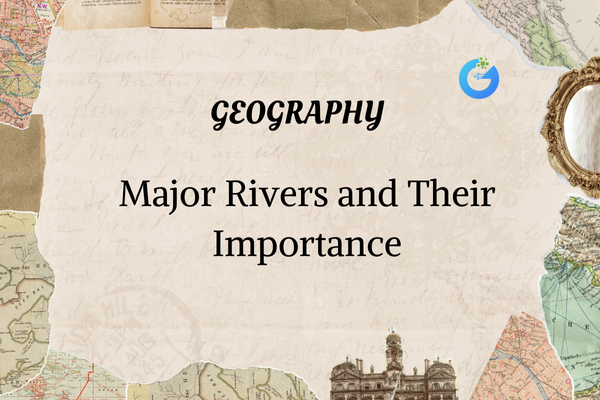Introduction – How Do Landforms Form?
Landforms are the natural features of Earth’s surface, such as mountains, valleys, rivers, and deserts. These features have existed for millions of years, and some continue to change today. From towering mountains to vast plains, landforms are shaped by forces deep within the Earth, as well as by nature’s external forces. Understanding how landforms form helps us appreciate the dynamic and ever-changing planet we live on. Let’s explore how these fascinating landforms come into being and evolve over time!
expert-led Geography classes – visit our website to learn more
What Are Landforms?
Landforms are the different shapes and features we see on Earth’s surface. These include:
- Mountains – Tall, steep areas of land that rise high above their surroundings, often formed by tectonic forces.
- Hills – Smaller, rounder versions of mountains that are less steep and generally lower in elevation.
- Plains – Large, flat areas of land, often covered with grass, that stretch over vast distances.
- Deserts – Vast dry areas with very little or no rainfall, characterized by unique vegetation and wildlife.
- Rivers – Flowing bodies of water that carve out valleys and contribute to shaping the landscape over time.
- Valleys – Low areas between mountains, often formed by the erosive power of rivers and glaciers.
- Plateaus – Flat, elevated areas of land, typically formed by volcanic activity or tectonic movements.
- Islands – Landforms completely surrounded by water, often formed by volcanic eruptions or rising sea levels.
Each of these landforms is shaped by specific processes, and they are continuously evolving as natural forces continue to act upon them.
Why Are Landforms Important?
Landforms play a critical role in how life on Earth is organized. They impact weather patterns, ecosystems, and human activities. For example:
- Mountains affect local climates by blocking winds and creating rain shadows, while also providing habitats for diverse plants and animals.
- Rivers are vital for freshwater, agriculture, and transportation, often serving as natural boundaries and trade routes.
- Deserts may appear barren but are home to specially adapted plants and animals that thrive with little water.
- Plains are the backbone of agriculture, offering fertile soil for crops to grow.
Studying landforms helps us understand the relationship between Earth’s physical features and the life that depends on them.
When Do Landforms Change?
Landforms are in a constant state of change. Some changes take millions of years, while others can happen in a matter of days. The forces of erosion and volcanic activity are powerful agents of change:
- Mountains are created when Earth’s tectonic plates push together, forming massive, towering ranges.
- Valleys are carved by the persistent flow of rivers over millions of years.
- Volcanoes erupt, rapidly creating new landforms, such as islands or lava plateaus.
The Earth is always on the move, and so are its landforms. Whether slowly shaped by erosion or suddenly altered by a volcanic eruption, landforms are continually evolving.
Where Do Landforms Exist?
Landforms can be found all around the globe. They vary from region to region, shaped by the local environment and geological processes. Some examples include:
- The Himalayas in Asia are the tallest mountains in the world, formed by the collision of tectonic plates.
- The Great Plains of North America are extensive, flat areas perfect for farming.
- The Sahara Desert in Africa is one of the largest and driest deserts, covering much of the continent.
- The Amazon River in South America cuts through the landscape, creating vast valleys.
- Australia features diverse landforms, including deserts, rainforests, and unique coastlines.
Different regions have their own types of landforms, shaped by unique natural forces at work.
How Are Landforms Formed?
Landforms are shaped by both internal and external forces:
- Internal Forces:
- Tectonic Activity: Earth’s plates are constantly moving. When they collide, mountains are formed; when they move apart, valleys and oceans are created.
- Volcanic Activity: Volcanoes erupt, releasing magma that solidifies into new landforms like islands, plateaus, and volcanic mountains.
- Tectonic Activity: Earth’s plates are constantly moving. When they collide, mountains are formed; when they move apart, valleys and oceans are created.
- External Forces:
- Erosion: Wind, water, and ice gradually wear down rocks and land, forming valleys, canyons, and coastal cliffs. The Grand Canyon, for example, was carved over millions of years by the Colorado River.
- Weathering: Rocks break down due to wind, water, and temperature changes. Over time, weathering can create caves, cliffs, and valleys.
- Deposition: When wind, water, or ice carry sediments and deposit them elsewhere, new features like beaches, deltas, and sand dunes form.
- Erosion: Wind, water, and ice gradually wear down rocks and land, forming valleys, canyons, and coastal cliffs. The Grand Canyon, for example, was carved over millions of years by the Colorado River.
These forces constantly shape and reshape the surface of the Earth, creating a dynamic landscape.
Core Concepts – What You Should Know
| Concept | Meaning | Example |
| Mountains | High, steep areas of land formed by tectonic forces | The Himalayas and the Alps |
| Valleys | Low areas between mountains, often formed by rivers | The Grand Canyon and river valleys |
| Deserts | Dry areas with little rainfall | The Sahara Desert |
| Volcanoes | Earth’s surface openings that release molten rock | Mount Vesuvius and Mount Fuji |
| Erosion | The process by which wind, water, or ice wear down land | Grand Canyon and river erosion |
| Tectonic Plates | Large pieces of Earth’s crust that move slowly | Himalayan mountains formed by plate collision |
FAQs – Curious Questions Kids Might Ask
Q1: Why do mountains have sharp peaks?
Mountains often have sharp peaks because they were formed by tectonic plates pushing together. The immense pressure from the collision causes the rocks to fold or break, creating steep, jagged peaks.
Q2: How do volcanoes create new landforms?
When a volcano erupts, it releases molten lava. As the lava cools and solidifies, it forms new land such as islands, mountains, or plateaus. This is how volcanic islands like Hawaii are formed.
Q3: What is a desert?
A desert is a dry area with very little rainfall. Although deserts may appear barren, they are home to unique plants and animals that have adapted to survive in extreme heat and dryness, like cacti in the Sahara.
Q4: Can landforms change quickly?
Yes! While many landforms take millions of years to form, some changes happen quickly. For example, volcanic eruptions can create new islands or reshape existing landscapes in just a few days.
Q5: What causes erosion?
Erosion is caused by natural elements like wind, water, or ice that gradually break down rocks and soil. Over time, this process shapes landforms such as valleys, canyons, and coastal cliffs.
Fun Facts About Landforms
- Volcanoes can create new islands, like the Hawaiian Islands!
- Some of the world’s biggest deserts were once covered by oceans.
- The Grand Canyon is over 5 million years old and was carved by the Colorado River.
- The Himalayas are still growing taller because the tectonic plates are pushing them upward!
- Rivers can create deltas where water deposits rich soil and forms new land.
Conclusion – Landforms Are Always Changing
Landforms are not just permanent features—they are constantly changing, evolving, and reshaping. Whether through slow processes like erosion or rapid events like volcanic eruptions, landforms are a testament to the dynamic forces at work beneath the Earth’s surface. Understanding how they form and change allows us to appreciate the beauty and complexity of our planet.








